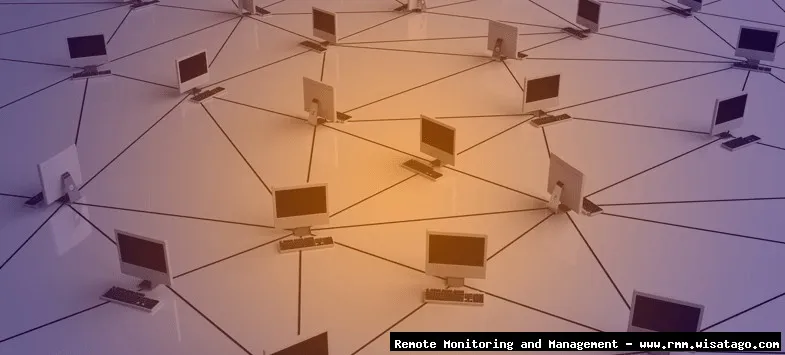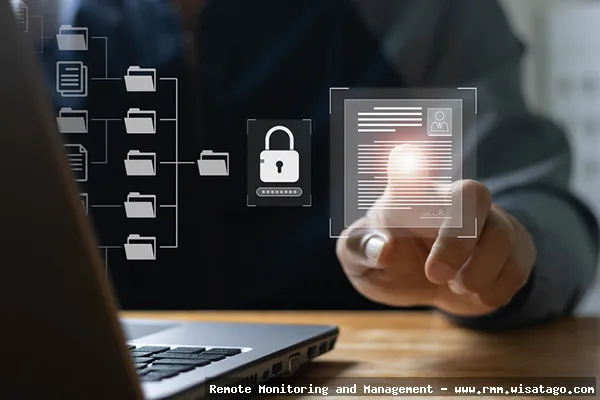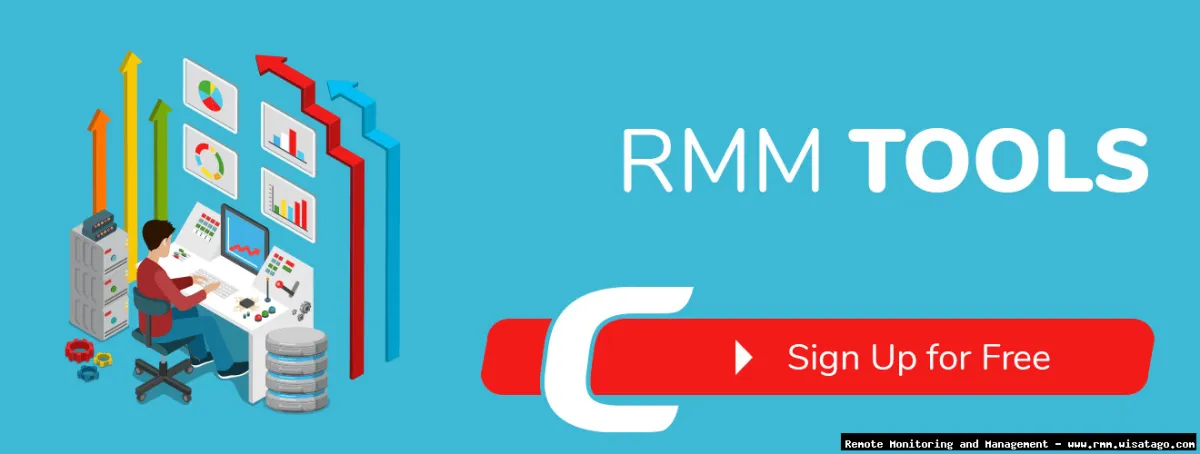Navigating the complex landscape of financial services compliance can feel like trying to solve a Rubik’s Cube blindfolded. Regulations like PCI DSS, GDPR, GLBA, and others demand stringent data security, robust access controls, and meticulous audit trails. For IT professionals in this sector, the pressure to maintain compliance while ensuring smooth operations is immense. The consequences of non-compliance – hefty fines, reputational damage, and even legal action – are simply too high to ignore.
Fortunately, technology offers a powerful ally in this fight: Remote Monitoring and Management (RMM) software. RMM isn’t just about managing endpoints; it’s about providing a centralized platform to enforce security policies, automate compliance tasks, and proactively identify potential vulnerabilities. Think of it as your compliance command center, giving you the visibility and control you need to stay ahead of the curve and demonstrate adherence to regulatory requirements.

This article aims to provide a comprehensive guide to understanding how RMM software can be leveraged to achieve and maintain financial services compliance. We’ll delve into the key features that make RMM a valuable tool, explore real-world use cases, and discuss the challenges and best practices for implementing an RMM solution in a regulated environment. Consider this your blueprint for building a robust and compliant IT infrastructure in the financial services industry.
Financial Services Compliance: A High-Stakes Game
The financial services industry operates under intense scrutiny. Regulators are constantly evolving their requirements to address emerging threats and protect consumers. Understanding the specific regulations that apply to your organization is the first crucial step. Here’s a brief overview of some of the most common compliance mandates:
- PCI DSS (Payment Card Industry Data Security Standard): Applies to any organization that handles credit card information. It mandates specific security controls to protect cardholder data.
- GDPR (General Data Protection Regulation): Protects the personal data of individuals within the European Union. It has implications for financial institutions that process data of EU citizens, regardless of where the institution is located.
- GLBA (Gramm-Leach-Bliley Act): Requires financial institutions to protect the privacy and security of consumers’ nonpublic personal information.
- SOX (Sarbanes-Oxley Act): Focuses on financial reporting and internal controls to prevent fraud and ensure accuracy of financial statements. While not directly IT-focused, strong IT controls are essential for SOX compliance.
- NYDFS Cybersecurity Regulation (23 NYCRR 500): A New York State regulation that requires financial institutions operating in New York to establish and maintain a comprehensive cybersecurity program.
Failing to comply with these regulations can result in significant penalties, including fines, legal action, and damage to your organization’s reputation. Moreover, a data breach resulting from non-compliance can erode customer trust and lead to significant financial losses.
The Cost of Non-Compliance
The financial implications of non-compliance are substantial. Fines for GDPR violations can reach up to 4% of annual global turnover or €20 million, whichever is higher. PCI DSS violations can result in fines ranging from $5,000 to $100,000 per month. Beyond the fines, there are also the costs associated with remediation, legal fees, and reputational damage, which can be even more devastating in the long run.

The Importance of Proactive Compliance
Compliance isn’t just about reacting to audits; it’s about building a proactive security posture. This means implementing controls and processes that continuously monitor and protect sensitive data. RMM software plays a crucial role in enabling this proactive approach.
RMM Software: Your Compliance Command Center
RMM software provides a centralized platform for managing and monitoring IT infrastructure. It allows IT professionals to remotely access, manage, and troubleshoot devices, networks, and applications. But beyond basic IT management, RMM offers a suite of features that are invaluable for achieving and maintaining financial services compliance.
Key RMM Features for Compliance
Here are some of the core RMM features that contribute to a strong compliance posture:
- Endpoint Monitoring and Management: Provides visibility into the health and security of all endpoints, including servers, desktops, laptops, and mobile devices. This allows you to identify and remediate vulnerabilities, ensure that security patches are up-to-date, and enforce security policies across the board.
- Patch Management: Automates the process of deploying security patches and updates to all managed devices. This is critical for addressing known vulnerabilities and preventing exploits.
- Software Inventory Management: Tracks all software installed on managed devices. This helps you identify unauthorized software, ensure license compliance, and prevent the use of vulnerable or outdated applications.
- Remote Access and Control: Enables secure remote access to devices for troubleshooting and maintenance. This allows IT professionals to resolve issues quickly and efficiently without requiring physical access to the device.
- Security Information and Event Management (SIEM) Integration: Integrates with SIEM systems to provide real-time security monitoring and threat detection. This allows you to identify and respond to security incidents quickly and effectively.
- Automation: Automates repetitive tasks, such as security scans, software updates, and compliance checks. This frees up IT staff to focus on more strategic initiatives and reduces the risk of human error.
- Reporting and Auditing: Provides detailed reports on the status of managed devices, security vulnerabilities, and compliance status. This allows you to demonstrate compliance to auditors and identify areas for improvement.
- Policy Enforcement: Allows you to define and enforce security policies across all managed devices. This ensures that all devices are configured according to your organization’s security standards.
RMM in Action: Real-World Compliance Use Cases
Let’s explore some specific examples of how RMM can be used to address common compliance challenges in the financial services industry:

PCI DSS Compliance
RMM can help you meet several PCI DSS requirements, including:
- Requirement 5: Protect all systems against malware and regularly update anti-virus software or programs. RMM allows you to centrally manage and update anti-virus software on all endpoints.
- Requirement 6: Develop and maintain secure systems and applications. RMM‘s patch management capabilities help you keep systems up-to-date with the latest security patches.
- Requirement 7: Restrict access to cardholder data by business need to know. RMM can be used to enforce access control policies and limit access to sensitive data.
- Requirement 10: Track and monitor all access to network resources and cardholder data. RMM provides detailed audit logs of all user activity, which can be used to track access to sensitive data.
- Requirement 11: Regularly test security systems and processes. RMM can be used to schedule and run regular security scans to identify vulnerabilities.
GDPR Compliance
RMM can assist with GDPR compliance by:
- Data Security: RMM‘s endpoint management and patch management features help protect personal data from unauthorized access and data breaches.
- Access Control: RMM can be used to enforce access control policies and limit access to personal data based on roles and responsibilities.
- Data Inventory: RMM‘s software inventory management capabilities can help you identify where personal data is stored on your network.
- Audit Trails: RMM provides detailed audit logs of all user activity, which can be used to demonstrate compliance with GDPR‘s accountability requirements.
GLBA Compliance
RMM can support GLBA compliance by:
- Information Security Program: RMM can be a key component of your organization’s information security program, providing tools for risk assessment, vulnerability management, and incident response.
- Customer Information Security: RMM‘s endpoint management and patch management features help protect customer information from unauthorized access and data breaches.
- Employee Training: RMM can be used to deliver security awareness training to employees and track their progress.
Challenges and Best Practices for RMM Implementation
While RMM offers significant benefits for financial services compliance, implementing an RMM solution can present some challenges. Here are some best practices to ensure a successful implementation:

Choosing the Right RMM Solution
Not all RMM solutions are created equal. When selecting an RMM solution, consider the following factors:
- Security: Ensure the RMM solution itself is secure and complies with relevant security standards.
- Scalability: Choose a solution that can scale to meet your organization’s needs as it grows.
- Integration: Select a solution that integrates with your existing IT infrastructure and security tools.
- Reporting: Look for a solution that provides detailed reporting and auditing capabilities.
- Vendor Reputation: Choose a reputable vendor with a proven track record of providing reliable and secure RMM solutions.
Developing a Comprehensive RMM Implementation Plan
A well-defined implementation plan is crucial for success. This plan should include:
- Defining clear goals and objectives: What specific compliance requirements are you trying to address with RMM?
- Identifying key stakeholders: Who needs to be involved in the implementation process?
- Developing a deployment strategy: How will you deploy the RMM agent to all managed devices?
- Configuring security policies: What security policies will you enforce using RMM?
- Training IT staff: How will you train your IT staff to use the RMM solution effectively?
Ongoing Monitoring and Maintenance
RMM is not a “set it and forget it” solution. It requires ongoing monitoring and maintenance to ensure that it continues to provide value. This includes:
- Regularly reviewing RMM reports and alerts: Identify and address any potential security vulnerabilities or compliance issues.
- Keeping the RMM solution up-to-date: Install the latest updates and patches to ensure that the solution remains secure.
- Continuously refining security policies: Adapt your security policies to address emerging threats and changing compliance requirements.
Conclusion: RMM as a Cornerstone of Compliance
In the highly regulated financial services industry, RMM software is more than just an IT management tool; it’s a critical enabler of compliance. By providing centralized visibility, automated tasks, and robust security controls, RMM helps organizations meet stringent regulatory requirements, protect sensitive data, and mitigate the risk of costly non-compliance penalties. By carefully selecting the right RMM solution, developing a comprehensive implementation plan, and committing to ongoing monitoring and maintenance, financial institutions can leverage the power of RMM to build a strong and compliant IT infrastructure.

Conclusion
In conclusion, navigating the complex landscape of financial services compliance demands a proactive and robust strategy. As we’ve explored, Remote Monitoring and Management (RMM) software offers a powerful solution, enabling firms to streamline compliance efforts, mitigate risks, and maintain a secure and regulated IT environment. By automating tasks, providing real-time monitoring, and facilitating comprehensive reporting, RMM significantly reduces the burden of compliance, allowing financial institutions to focus on their core business objectives.
The benefits of integrating RMM into your compliance framework are undeniable, ranging from enhanced data security and improved audit readiness to increased operational efficiency and reduced costs. Ignoring these advantages could leave your organization vulnerable to costly penalties and reputational damage. We urge you to seriously consider how RMM software can fortify your financial services compliance strategy. To learn more about specific RMM solutions tailored for the financial industry and how they can help your organization achieve its compliance goals, we encourage you to explore the resources available on our website or contact our team for a personalized consultation at www.example.com/contact.
Frequently Asked Questions (FAQ) about Financial Services Compliance through RMM Software
How can Remote Monitoring and Management (RMM) software help my financial services firm achieve and maintain regulatory compliance, specifically regarding data security and access controls?
RMM software plays a crucial role in helping financial institutions meet stringent regulatory compliance requirements, particularly in areas like data security and access control. By providing centralized monitoring and management capabilities, RMM enables firms to proactively identify and address potential security vulnerabilities. For example, RMM can automate patch management, ensuring all systems are up-to-date with the latest security fixes, thereby mitigating the risk of exploitation. Furthermore, RMM facilitates the implementation and enforcement of robust access controls by monitoring user activity, detecting unauthorized access attempts, and automating user provisioning and deprovisioning. This helps maintain a secure environment and demonstrates adherence to regulations like PCI DSS, GDPR, and SEC guidelines, which often mandate specific security measures for financial data. For more information, you can refer to RMM as an additional resource.
What specific RMM software features are most important for ensuring compliance with financial regulations such as the Gramm-Leach-Bliley Act (GLBA) or the Sarbanes-Oxley Act (SOX)?
Several RMM software features are critical for complying with regulations like GLBA and SOX. Endpoint management allows for consistent security policies across all devices, a necessity for GLBA’s emphasis on data protection. Automated patching is vital for addressing vulnerabilities that could lead to data breaches, a risk both acts aim to mitigate. Comprehensive reporting and auditing capabilities provide a detailed record of system activities and security events, crucial for demonstrating compliance to auditors. Remote access control ensures only authorized personnel can access sensitive data and systems, further strengthening security. Finally, intrusion detection and prevention features can identify and block malicious activity, safeguarding financial data and systems. These features, when properly implemented and managed, help financial institutions meet their compliance obligations under GLBA, SOX, and other relevant regulations.
How can I use RMM software to automate compliance reporting and audit trails for my financial advisory business, and what benefits does this automation provide in terms of time savings and accuracy?
RMM software can significantly streamline compliance reporting and audit trails for financial advisory businesses through automation. The software’s monitoring capabilities allow for the continuous collection of data related to security events, user activity, and system configurations. This data can then be automatically compiled into reports that demonstrate compliance with specific regulations. For example, RMM can generate reports detailing patch deployment status, user access rights, and security policy enforcement. This automation saves considerable time compared to manual data collection and report creation. Furthermore, automated reporting reduces the risk of human error, ensuring greater accuracy and reliability in compliance documentation. By providing comprehensive and readily available audit trails, RMM simplifies the audit process and helps financial advisory businesses demonstrate their commitment to regulatory compliance, improving efficiency and reducing the burden of audits.